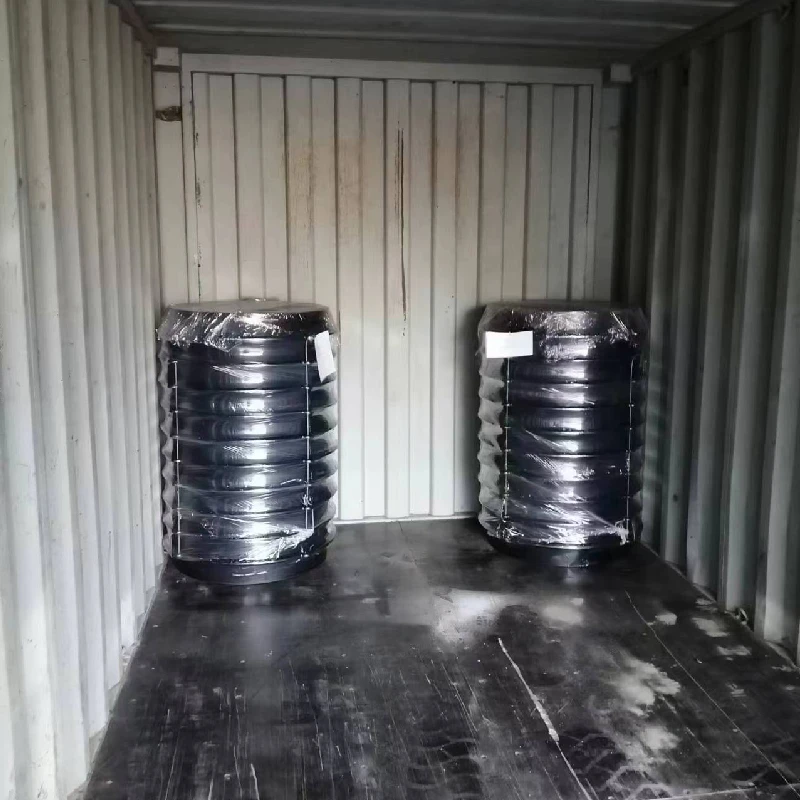PN 10 Butterfly Valve Specifications and Applications for Fluid Control Systems
Understanding Butterfly Valve PN 10 Features and Applications
Butterfly valves are widely used in various industries due to their simple design, compact size, and efficiency in regulating flow. The PN 10 designation refers to the pressure rating of the valve, indicating it can handle a maximum pressure of 10 bars (approximately 145 psi). In this article, we will explore the features, advantages, and applications of butterfly valves classified with this pressure rating.
What is a Butterfly Valve?
A butterfly valve is a type of quarter-turn valve that uses a rotating disc to control the flow of fluid. The disc is mounted on a shaft, and when the valve is closed, the disc blocks the flow in the pipeline. Conversely, rotating the disc a quarter turn allows fluid to flow freely. This simple mechanism allows for quick operation and ease of control over fluid flow.
Features of PN 10 Butterfly Valve
1. Pressure Rating As previously mentioned, the PN 10 rating indicates that the valve can sustain a maximum pressure of 10 bars. This makes it suitable for medium-pressure applications and ensures safety and reliability in operations.
2. Material Options PN 10 butterfly valves are manufactured from various materials, including cast iron, stainless steel, and plastic. The choice of material depends on the application and the type of fluid being transported. For instance, stainless steel valves are preferred for corrosive fluids, while cast iron valves are often used for water supply systems.
3. Sealing Mechanism Most PN 10 butterfly valves feature an elastomeric seal, which provides a tight shut-off and prevents leakage. This is particularly important in applications where fluid loss can lead to significant operational and economic concerns.
4. Design Variants Butterfly valves come in several design variants, including wafer, lug, and flanged types. Wafer-type valves are sandwiched between two flanges, while lug-type valves have threaded inserts for bolting. Flanged valves, on the other hand, come with integrated flanges for direct connection to other piping systems.
5. Actuation Options These valves can be manually operated, or equipped with actuators for automatic operation. Pneumatic, electric, and hydraulic actuators are commonly used based on the operational requirements and the level of automation desired.
Advantages of PN 10 Butterfly Valves
- Space Efficiency Due to their compact design, butterfly valves occupy less space than other valve types, making them ideal for installations where space is at a premium.
butterfly valve pn 10

- Low Pressure Drop The design of butterfly valves allows for a lower pressure drop across the valve when fully open, enhancing system efficiency, especially in large diameter pipelines
.- Cost-Effective Generally, butterfly valves are more cost-effective than similar-sized gate or globe valves. Their simpler manufacturing process contributes to lower costs, making them a popular choice in many applications.
- Versatility They can be used in a variety of applications, including water treatment plants, HVAC systems, chemical processing, and food and beverage industries.
Applications
PN 10 butterfly valves are utilized in numerous applications
1. Water Supply Systems They are commonly used in municipal water systems for flow control and isolation.
2. Chemical Processing Their durability and ability to handle various chemicals make them suitable for the chemical industry.
3. HVAC Systems Butterfly valves are used for regulating airflow in heating, ventilation, and air conditioning systems.
4. Food and Beverage Industry Hygiene and safety are paramount, making butterfly valves a popular choice in food processing applications.
Conclusion
Butterfly valves rated PN 10 offer a blend of efficiency, cost-effectiveness, and versatility, making them an essential component in many industrial applications. Understanding their features and appropriate applications can help in selecting the right valve for your needs, ensuring optimal performance and reliability in your systems.
-
The Smarter Choice for Pedestrian AreasNewsJun.30,2025
-
The Gold Standard in Round Drain CoversNewsJun.30,2025
-
The Gold Standard in Manhole Cover SystemsNewsJun.30,2025
-
Superior Drainage Solutions with Premium Gully GratesNewsJun.30,2025
-
Superior Drainage Solutions for Global InfrastructureNewsJun.30,2025
-
Square Manhole Solutions for Modern InfrastructureNewsJun.30,2025
-
Premium Manhole Covers for Modern InfrastructureNewsJun.30,2025
